If you’re looking to add some color and beauty to your garden, red blooms and flowers are often the best option. Fortunately, there are plenty of beautiful and popular red-colored plants to choose from.
From lilies and roses to peonies and begonias, the options are endless, so you’re bound to find something that suits your personal preference!
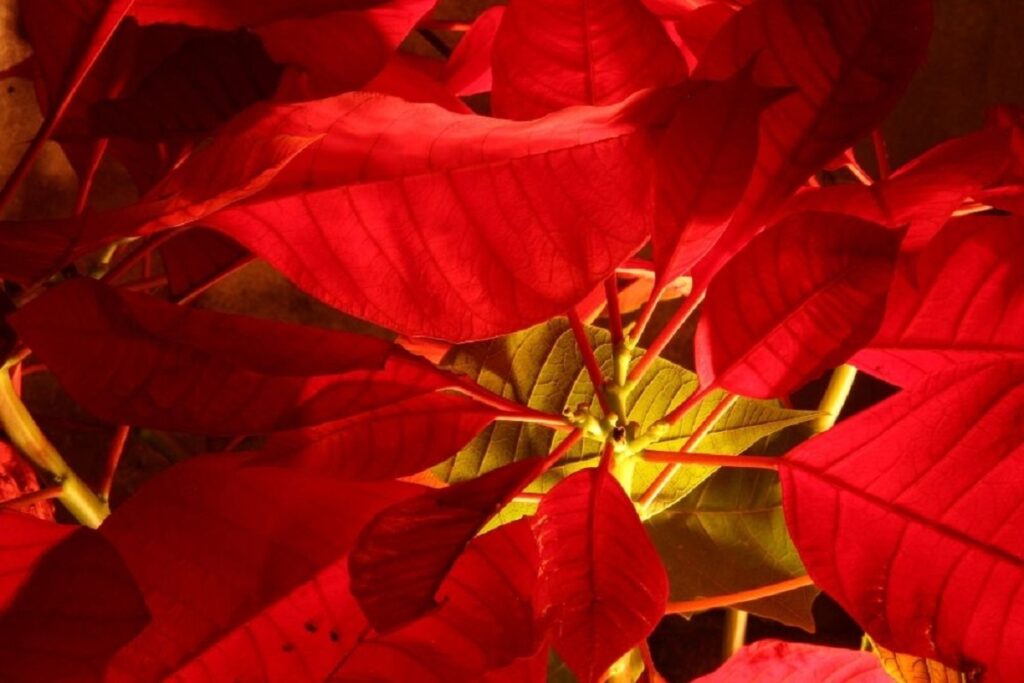
With this in mind, our guide will take a look at 20 of the most popular types of red plant you can add to your garden. We’ll also look to answer a few of the frequently asked questions related to red-colored flowers.
1. Lily

The first plant on our list is the lily which is an incredibly popular flower due to their unique shape. As lilies bloom in the summer, their petals typically extend to a large size, making them a perfect gift for special occasions. The lily grows best in full sun or partial shade, and requires most, well-drained soil.
2. Chrysanthemum

Also known sometimes as “mums”, chrysanthemums were originally grown in China, and come in lots of different shapes and colors (including red). This perennial plant can produce anything from dime-sized pom poms up to large daisy-like blooms – just make sure you plant them in full sunlight with well-drained soil.
RELATED: True Colors Shining Through: 10 Different Types Of Chrysanthemums
3. Rose

Perhaps the most popular and famous red-colored plant, the rose is the ideal plant for beginner gardeners, as they typically last from spring to fall. So, if you’re looking for a beautiful and durable red plant for your garden, the rose is an excellent choice. Just keep in mind that it requires full sunlight for optimal growth, as well as most, well-drained soil.
4. Amaryllis
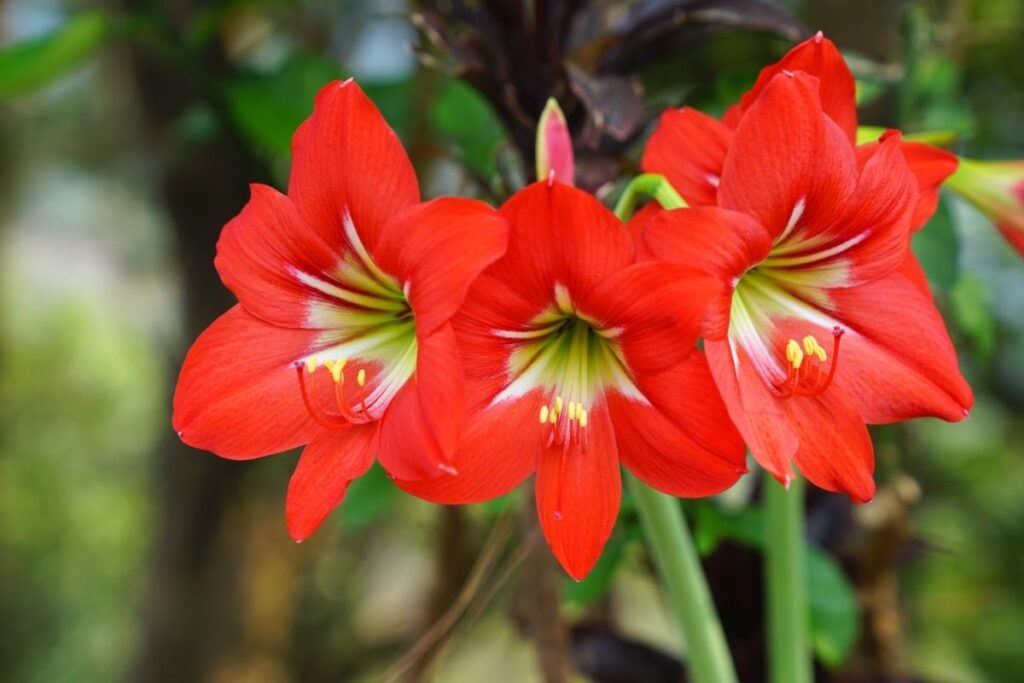
The next red plant on our list is the amaryllis. This bulbous plant usually blooms in late spring or early summer, and produces large blossoms that come in either red or white. Make sure you provide amaryllis with full or partial sunlight, as well as humus-rich, well-drained soil. It’s worth noting that this plant looks great when grown next to tulips and other bright-colored flowers.
5. Poppy

One of the most symbolic red plants you’ll find is the poppy. Oriental poppies produce impressive red flowers which typically bloom in late spring or early summer. For people who live in England, poppies are considered to be an incredibly patriotic plant as they represent all the lives lost in the first World War. To give poppies the best chance of growing, plant them in full sun with well-drained soil.
6. Peony
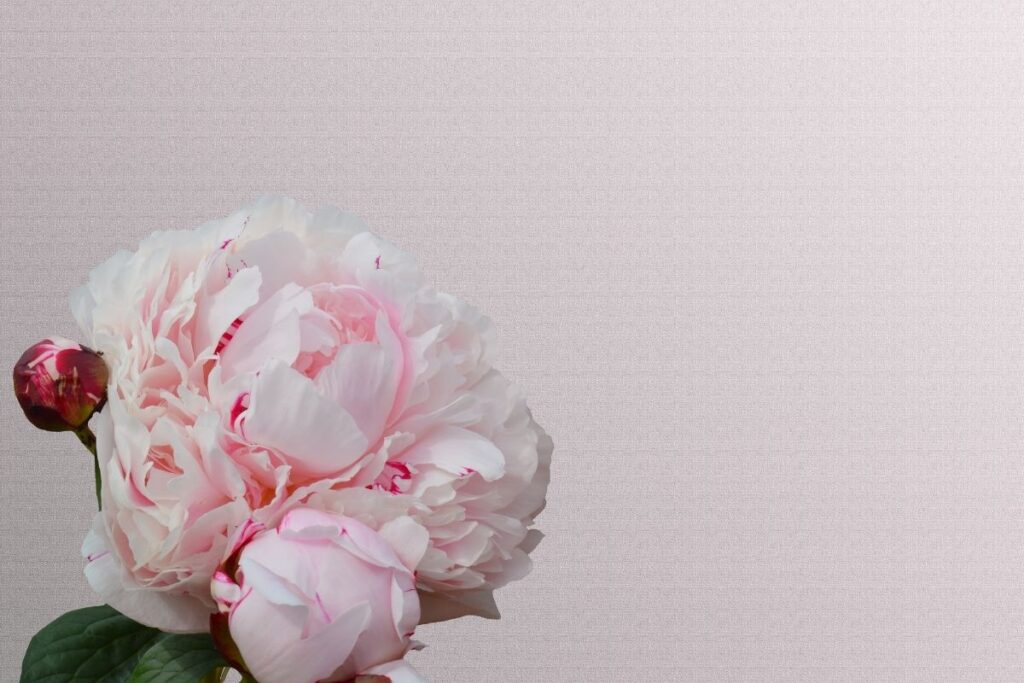
Peonies produce beautiful, lush blooms that can grow up to four feet tall. This popular perennial plant usually blooms at the end of spring, but can tolerate pretty much all weather conditions. For optimal growth, peonies are best planted in full sun or partial shade with moist, well-drained soil.
7. Tulip
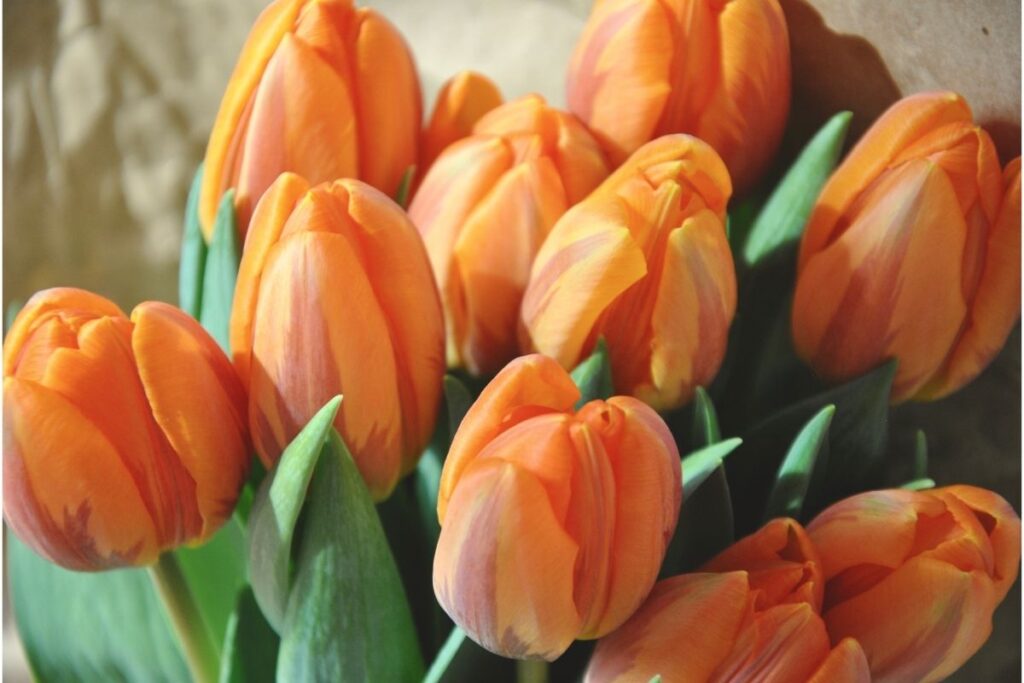
Tulips come in a wide variety of different sizes and colors, but red tulips are particularly impressive on the eye. These excellent flowers can be grown effectively in tight clusters, and typically bloom during the spring months. Just be sure to provide them with full sunlight and rich, well-drained soil.
8. Azalea
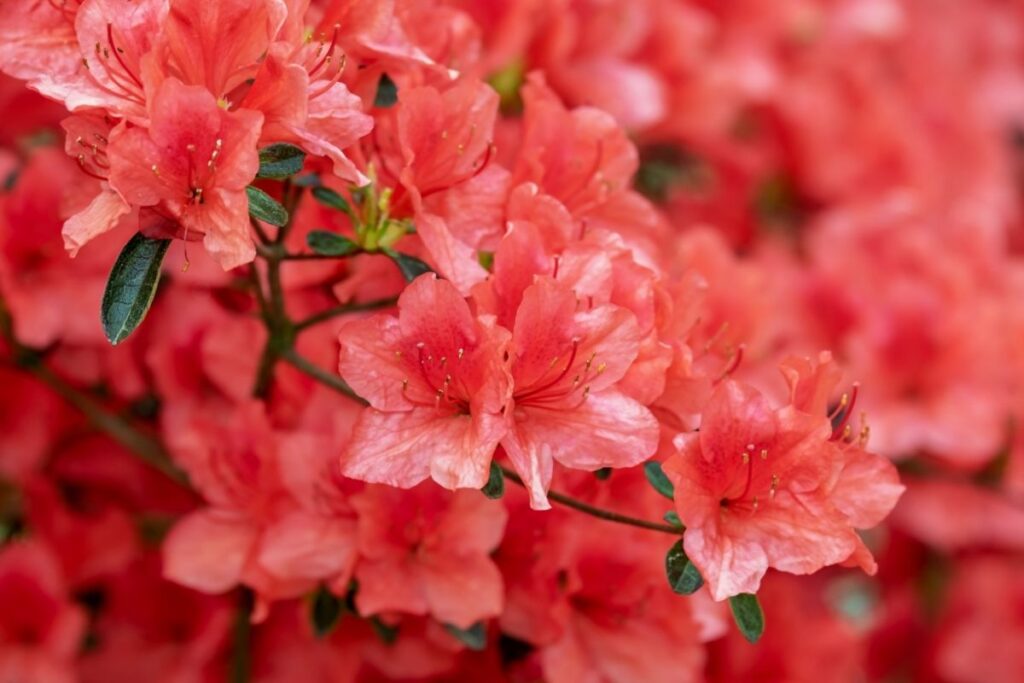
This stunning shrub features brilliant clusters of blossoms, glossy evergreen leaves, and can often grow up to eight feet in height. Azaleas usually bloom from spring all the way through to summer, which is one of the main reasons why they’re so popular. Unlike most of the other red plants on this list, azaleas require certain growing conditions – moist, acidic soil with a good amount of wind protection.
9. Marigold
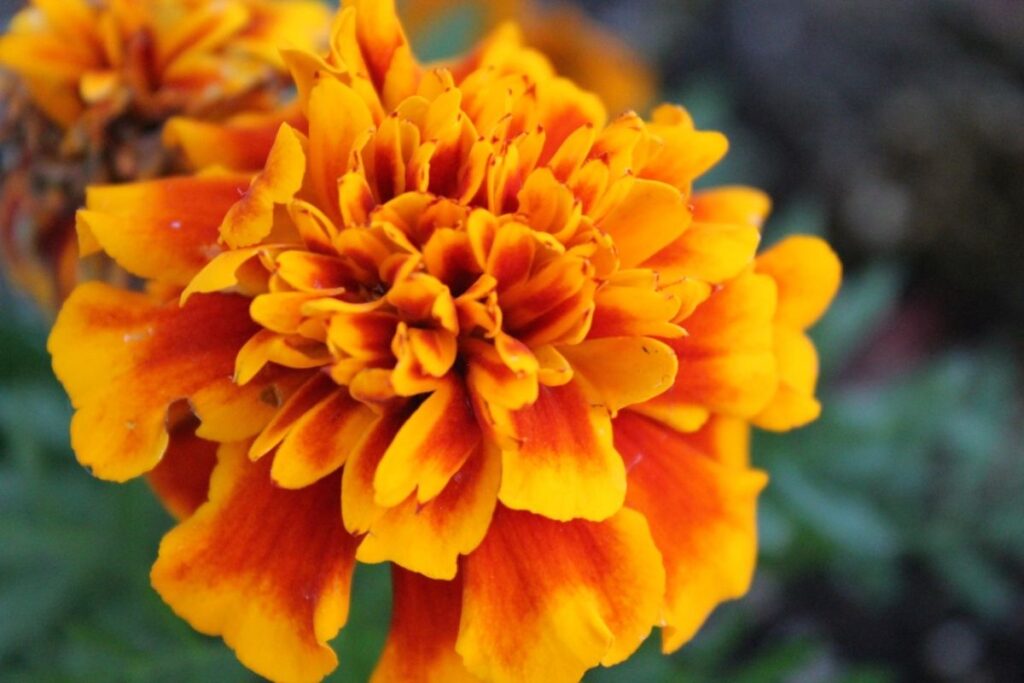
The next plant on our list is the marigold which comes in shades of red, orange, and yellow. While this beautiful plant has a distinct, peppery scent that some find unpleasant, it’s extremely useful for keeping insect pests away. Marigolds tend to bloom in early summer to mid fall, and are a great option if you’re looking to add some color to your garden. Just be sure to plant them in full sun with well-drained soils.
10. Carnation
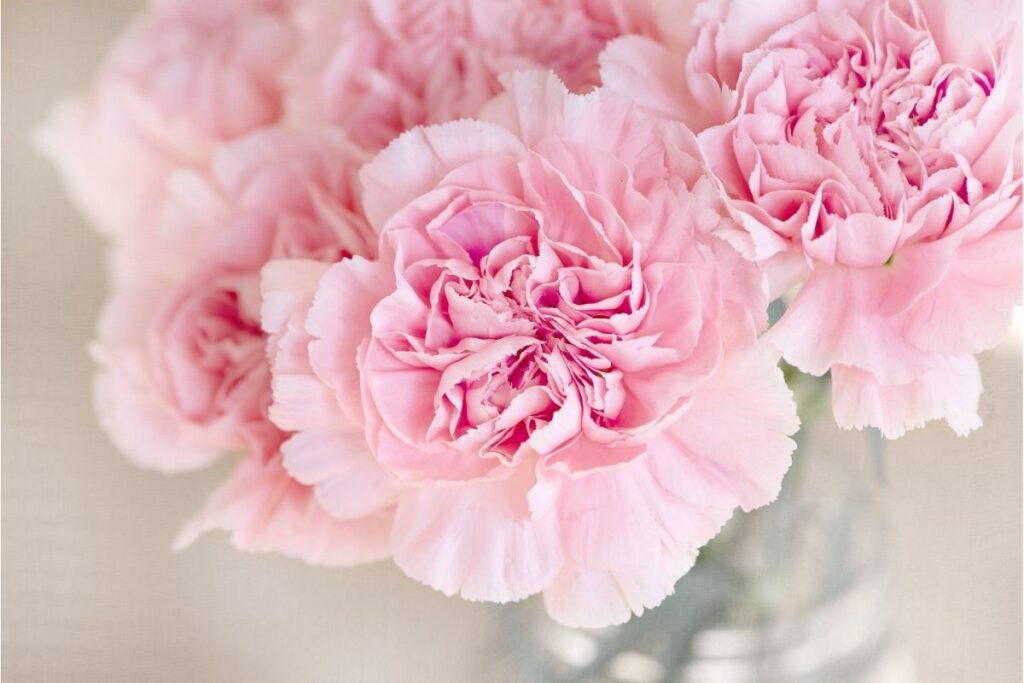
Carnations, also known as “dianthus caryophyllus”, are a stunning herbaceous plant native to Mediterranean climates. They produce impressively robust flowers in pretty much any color, and can grow up to 35 inches in height. Carnations are easy to care for as they only require well-drained soil and exposure to full sunlight.
11. Iris
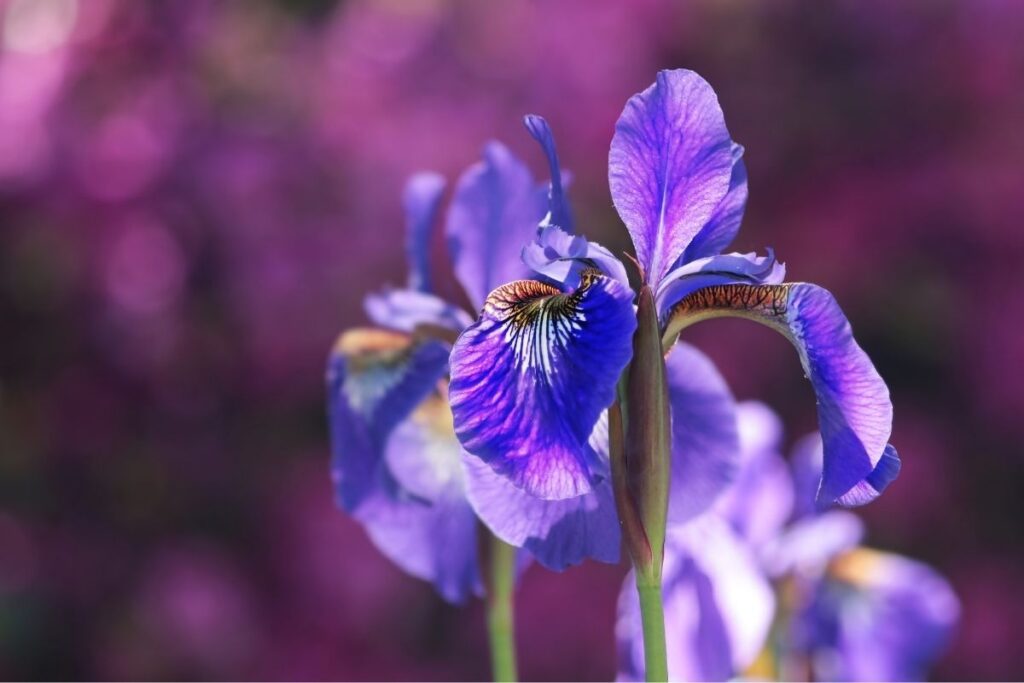
Irises are an incredibly popular type of plant, but it’s worth noting they don’t last quite as long as many of the other red plants on this list. Therefore, if you’re planning on growing some irises, it’s essential that you’re careful and plan ahead. They typically bloom best during the summer months with direct sunlight and rich, well-drained soil.
12. Begonia

This flowering bush comes in many different colors and often provides large double blooms. The beautiful flowers of begonia are at their most impressive during the summer and in climates with little wind. All begonias require moist, well-drained soil, while most prefer to be planted in full sun or partial shade.
13. Geranium
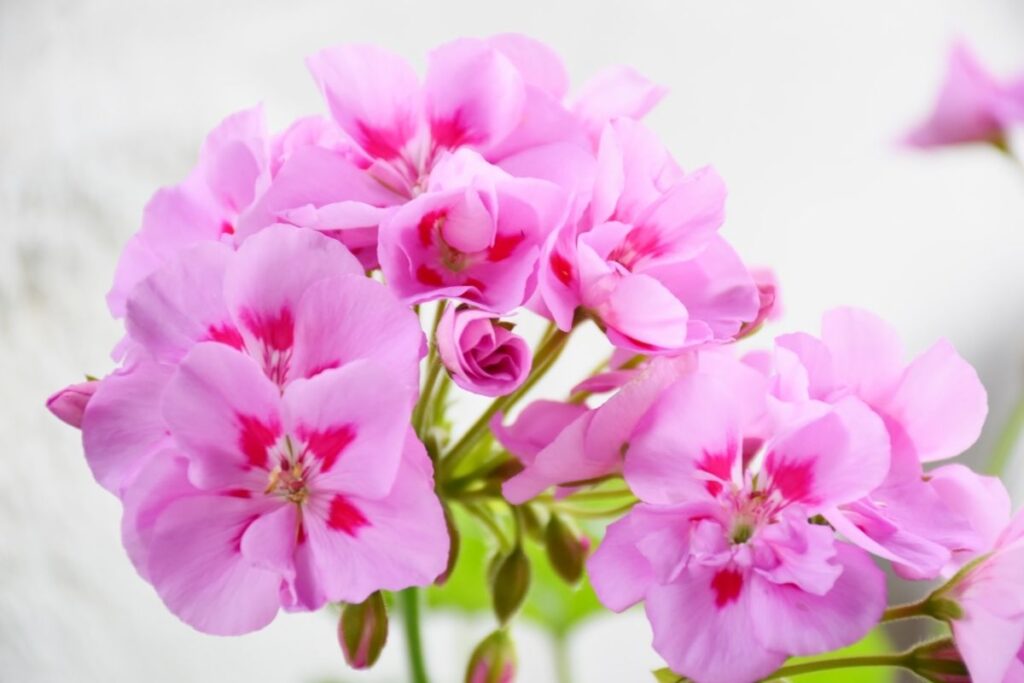
Geraniums have many different species, so often come in a wide variety of colors. The perennial plant can be grown both indoors and outdoors, with the flowers typically blooming from early summer to fall. For optimal growth, geraniums are best in full sunlight with moist, well-drained soil.
14. Hydrangea
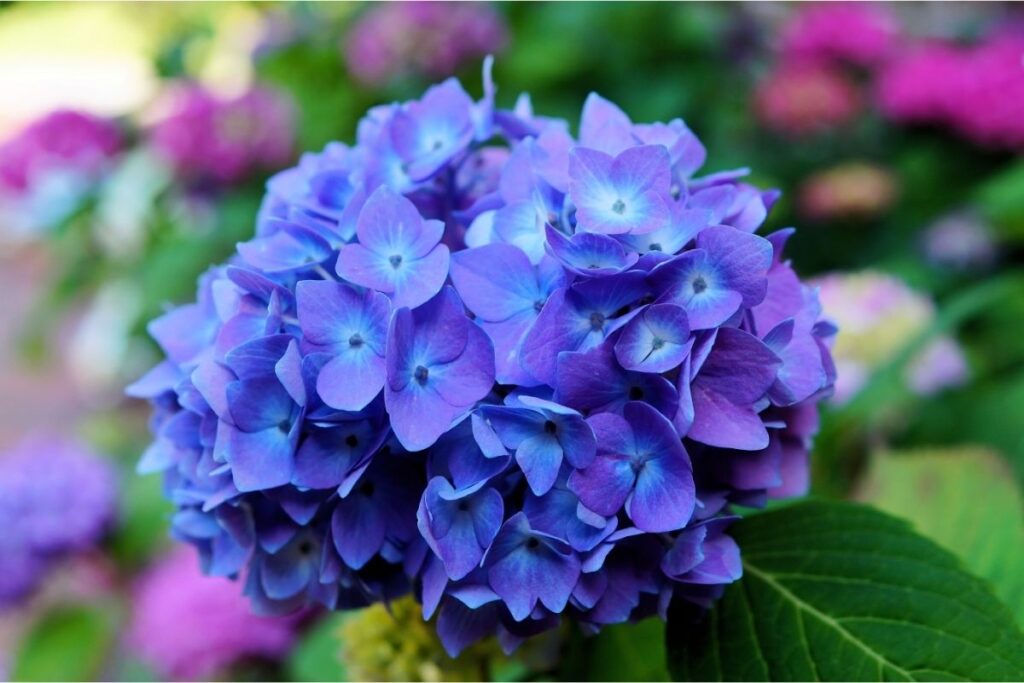
While most hydrangeas are usually either white or violet, some varieties are also red-pink. This popular shrub is a great addition to any garden, and grows best in partial shade with well-drained soil.
15. Dahlia
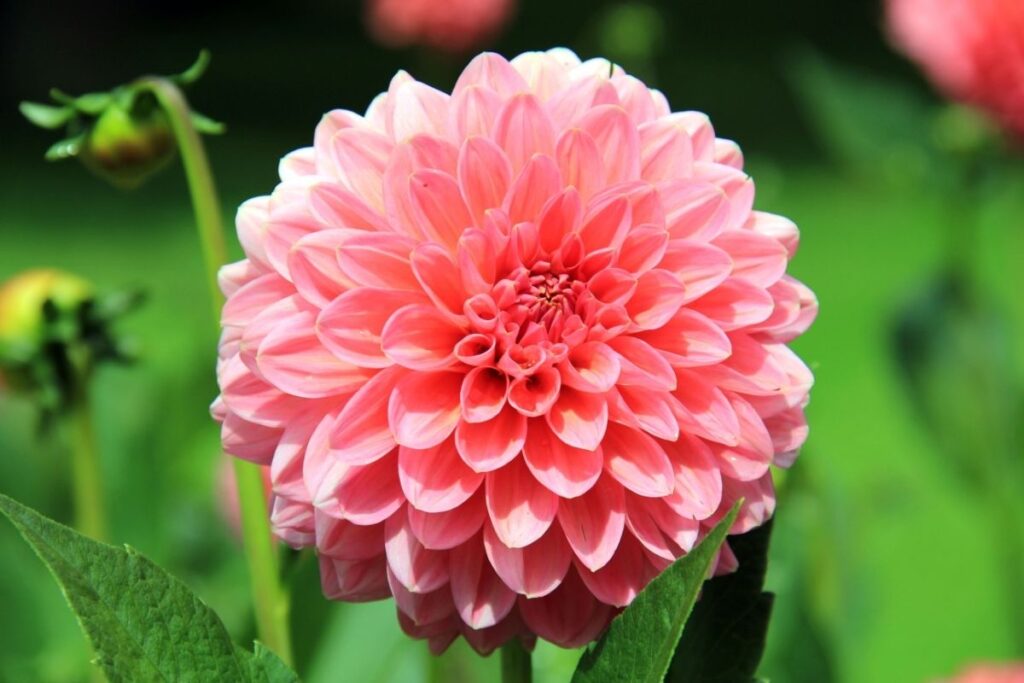
First found in Mexico, dahlias have a unique shape which makes them a popular choice for gardeners all over the world. The multi-petaled blooms typically grow best from July to October, and require full sunlight with moist, well-drained soil.
16. Petunia
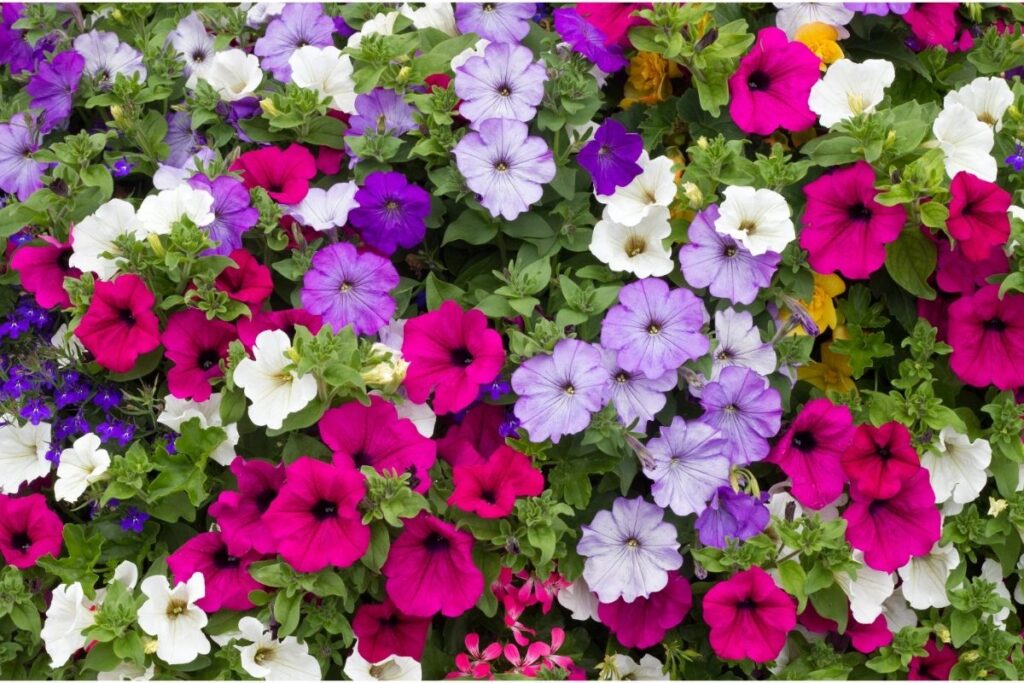
Petunias are originally from South America, but can now be found pretty much all around the world. This perennial plant shares many similarities with a tobacco plant, and can often be crossed with them. Petunias tend to bloom during spring and will typically last until the ground begins to freeze – just be sure to plant them in full sunlight for optimal growth.
17. Coneflower
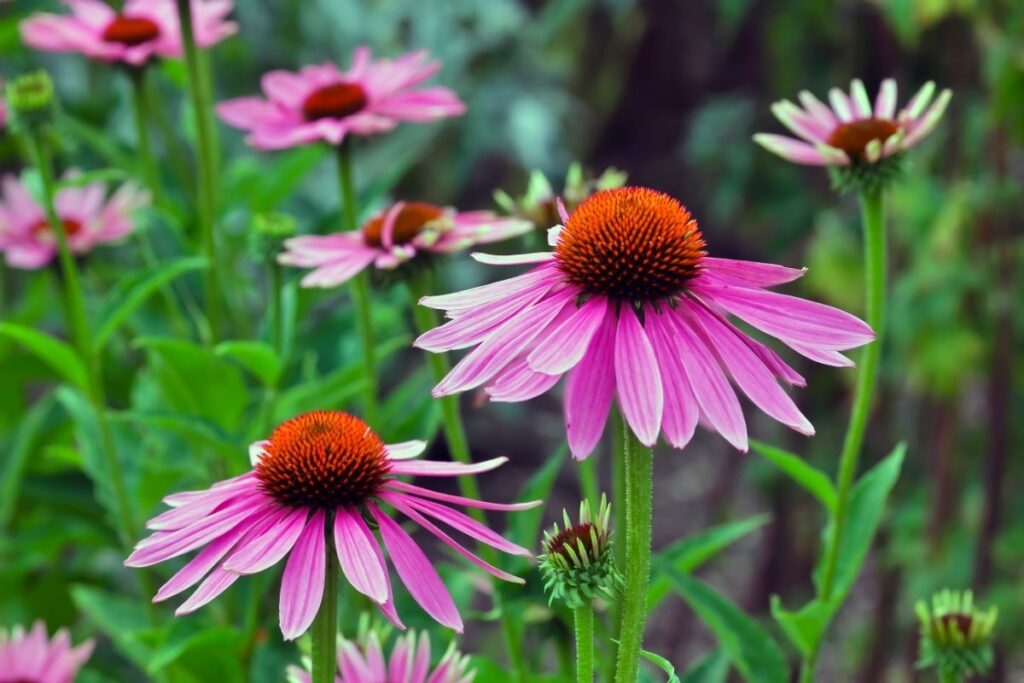
The next red plant on our list is the coneflower. This plant is also referred to as “echinacea”, and is a herbaceous flowering plant that’s part of the daisy family. Coneflowers are best known for their important contribution to herbal medicine and remedies, and grow best in moist, well-drained soil with full sunlight or partial shade.
18. Cockscomb
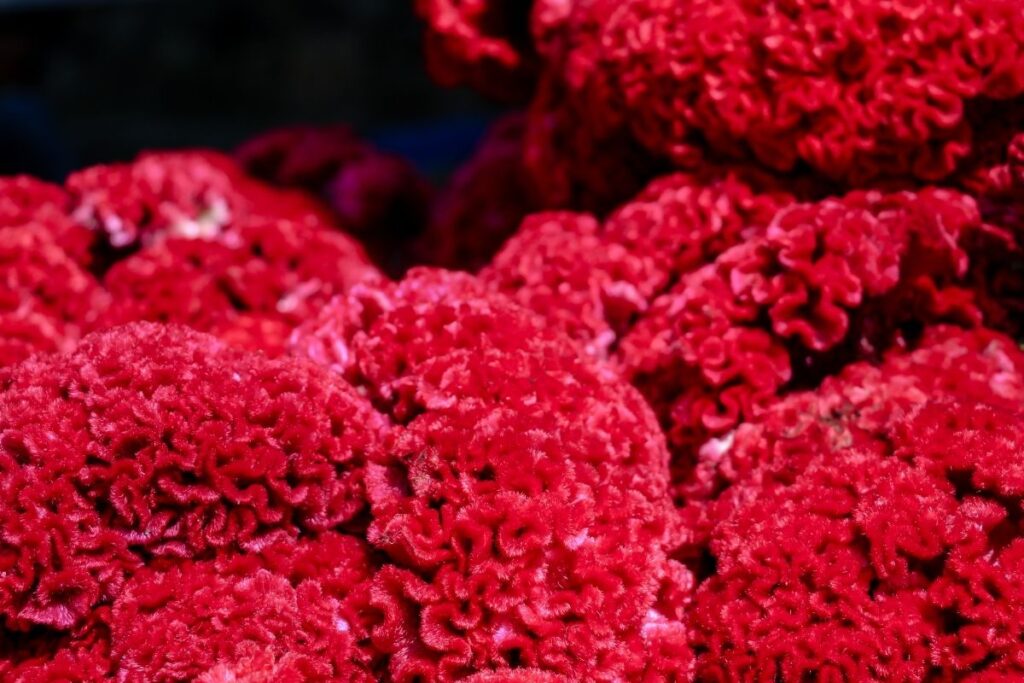
Cockscomb provides an open, feathery cluster of flowers that are typically colored either red, yellow, orange, or pink. As the name of the plant suggests, these tightly clustered blooms are believed to resemble a rooster’s comb. Make sure you plant cockscomb in full sunlight and in well-drained soil.
19. Hibiscus
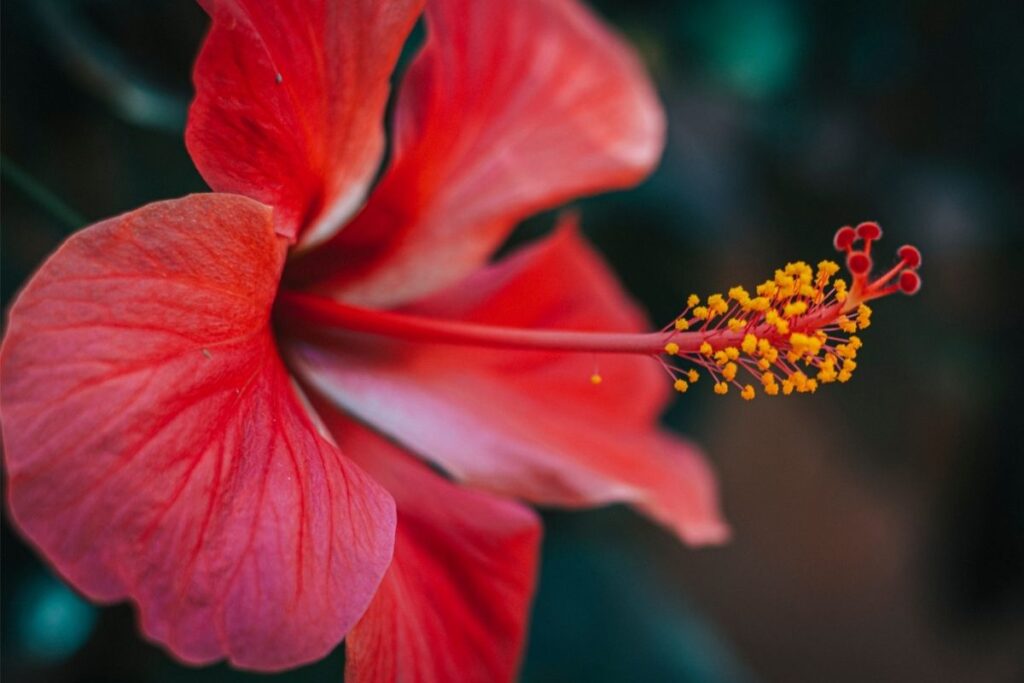
With blossoms the size of a dinner plate, hibiscus is a large-scale herbaceous plant that’s a true showstopper in any environment. The plant typically blooms in spring through to fall, and is the perfect red plant for adding a tropical feel to a garden. Just be sure to plant hibiscus in rich, well-drained soil and in full sun or partial shade.
RELATED: Flower Power: 27 Different Types Of Hibiscus Flowers
20. Camellia
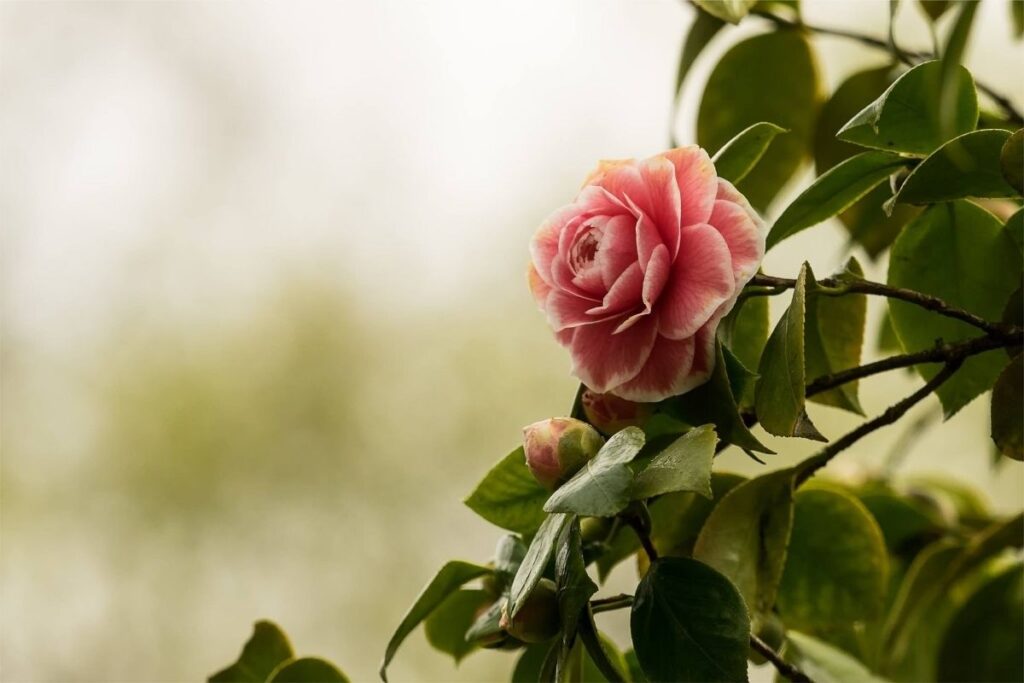
The final red plant on our list, and by certainly no means the least, is the camellia. This evergreen shrub produces large and fragrant flowers which come in a wide range of different colors, including red, pink, white, and yellow. Camellias tend to bloom in the winter, and are relatively easy to care for so long as they exist in nutrient-rich soil and receive plenty of water.
The Bottom Line
To conclude, there are a wide range of red plants that provide the perfect addition of color and beauty, whether you’re growing your own garden or designing a special bouquet of flowers. So, be sure to keep an eye out for many of the red plants listed above, because you won’t be disappointed!
Frequently Asked Questions
Why Do Hummingbirds Like Red Flowers?
Red is the brightest color for hummingbirds as they have a greater amount of red cones in their eyes that contain red pigments than any other color. As such, they are attracted to these bright red colors, leading them to turn to red flowers for nectar. This also explains why people often make hummingbird feeders bright red.
Why Are The Leaves On My Geraniums Turning Yellow?
The most common cause for yellowing leaves on geraniums is the presence of too much moisture. This is why extended periods of cool and wet weather can cause the leaves of geraniums to turn yellow. Moreover, when geranium leaves become more yellow than green, this could also be an indication that the plant is suffering from a nutrient deficiency.
What Kind Of Cactus Typically Has Red Flowers?
The moon cactus is the one that’s most commonly associated with producing red flowers. However, there are also plenty of other kinds of cactus that might produce red-colored flowers, including the claret cup cactus, the kingcup cactus, and the matucana cactus.







